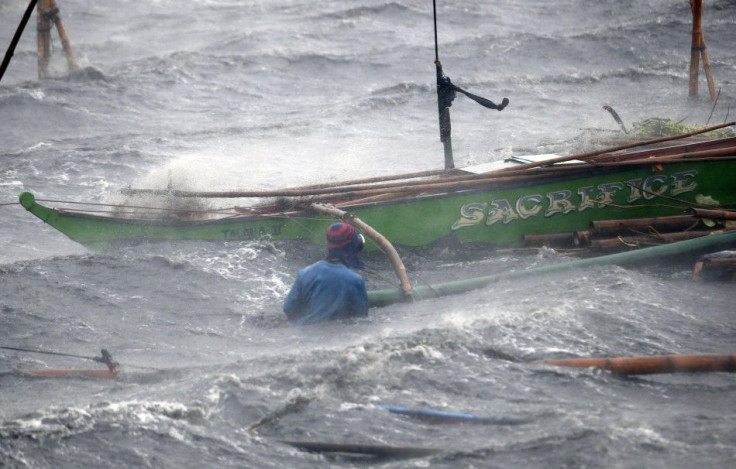Typhoon Rammasun Threatens China, Leaves 20 Dead in Philippines

China's southern coastal regions are now bracing for Typhoon Rammasun as it left 20 dead in the Philippines, alongside a massive electrical knockdown affecting millions of people.
The People's Daily Online, citing the National Meteorological Center, said Typhoon Rammasun is expected to make landfall early Friday morning in the coastal areas of Guangdong and Hainan provinces. The neighboring provinces of Yunnan, Guizhou, Fujian and Guangxi Zhuang Autonomous Region are likewise expected to get affected with the typhoon's intense rainstorms.
"Rammasun will likely bring winds close to 100 mph to Hainan Island on Friday," Eric Leister, a meteorologist from Accuweather, said.
These regions will experience extreme rainstorms, strong gales, downpours and high tides from July 17 to 20.
"It is moving northwest at 25 km per hour and is likely to make landfall in the west of Guangdong Province or in Hainan on Friday," Shanghai Daily quoted Cheng Zhengquan, chief weatherman with the provincial meteorological station.
Residents in these regions have been cautioned to expect possible storm surges of up to 2.5 metres (8 feet) as well as rainfall of 4-8 inches.
Typhoon Rammasun, the strongest cyclone to hit the Philippines' capital of Manila in eight years, left at least 20 people dead and millions still without electricity on Thursday.
Professional storm-chaser James Reynolds went to Legazpi, capital of the province of Albay, and witnessed the effects of being both in the eye and eyewall of Rammasun on Tuesday.
Big mall we're in being shredded, front breaking off into sea. We're safe surrounded by lots of concrete! #glendaPH #typhoon #Rammasun
— James Reynolds (@EarthUncutTV) July 15, 2014
Seafront of the mall we sheltered in last night during #typhoon #GlendaPH #Rammasun in Legaspi pic.twitter.com/BSQ4tOZFyK
— James Reynolds (@EarthUncutTV) July 15, 2014
Its ferocious winds tore roofs off houses, overturned cars, toppled age-old trees that eventually ripped down electricity lines in Metro Manila which has a population of about 12 million people.
According to the 6 m report of the National Disaster Risk Reduction and Management Council, 13 of the 20 people killed were hit by falling trees or collapsed walls. Five were reported missing, while there were seven injured.
Rammasun, which means "God of Thunder" in Thai, is the Philippines' seventh storm of the season and the first typhoon to directly impact the country in 2014.
Watch this video (here) that Reynolds made to show the impacts of Rammasun in the Philippines.





















